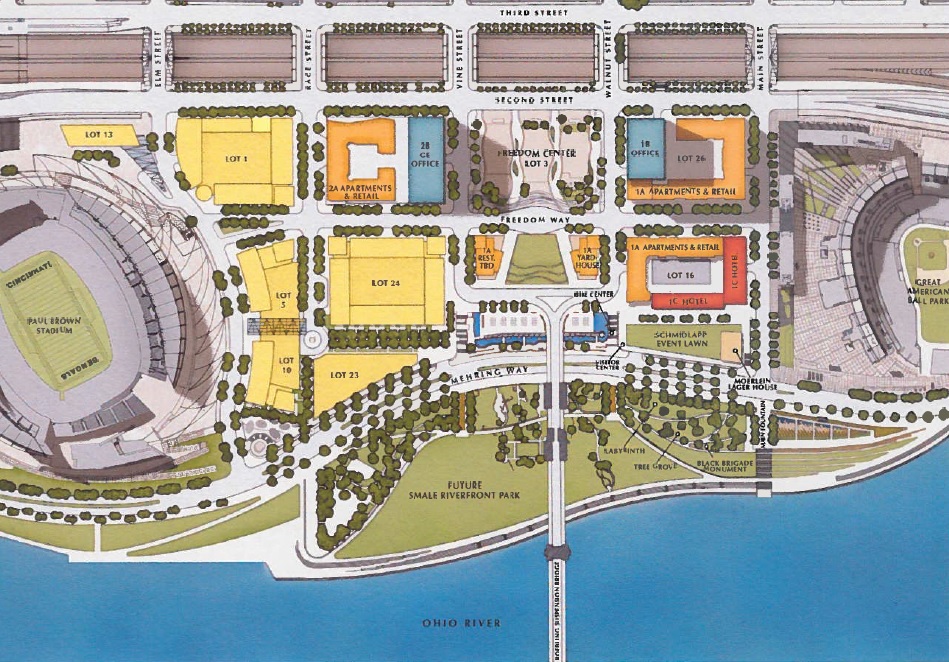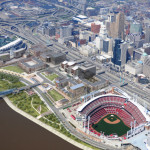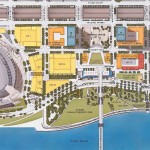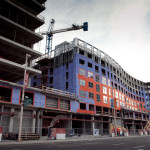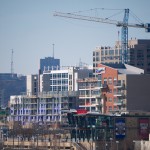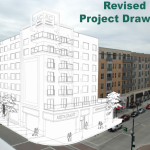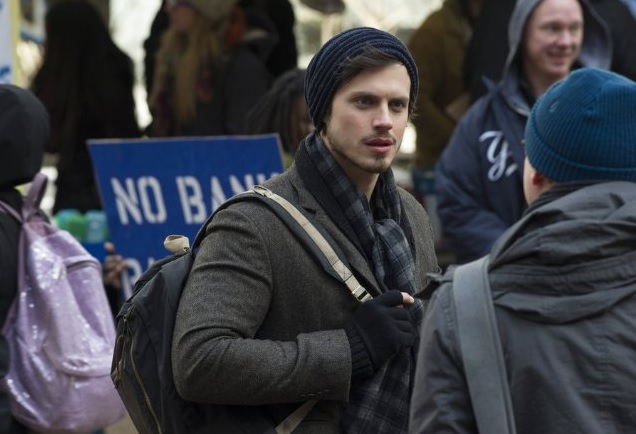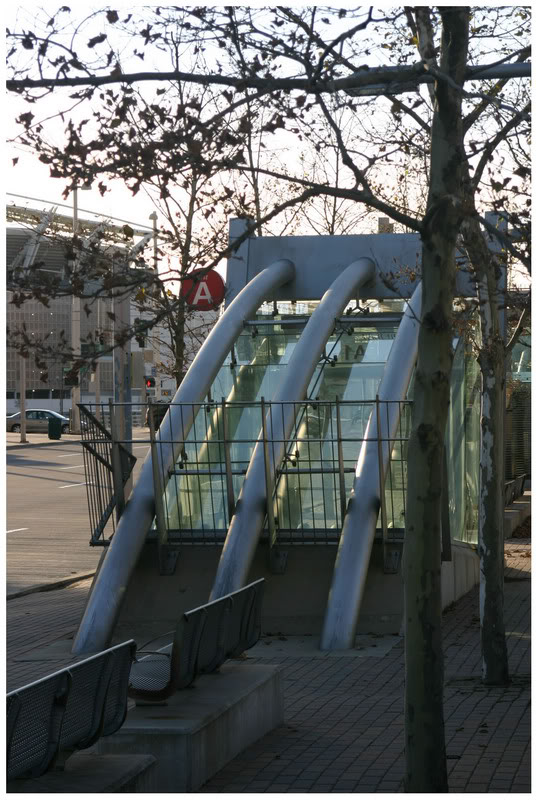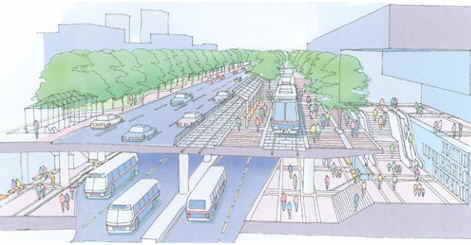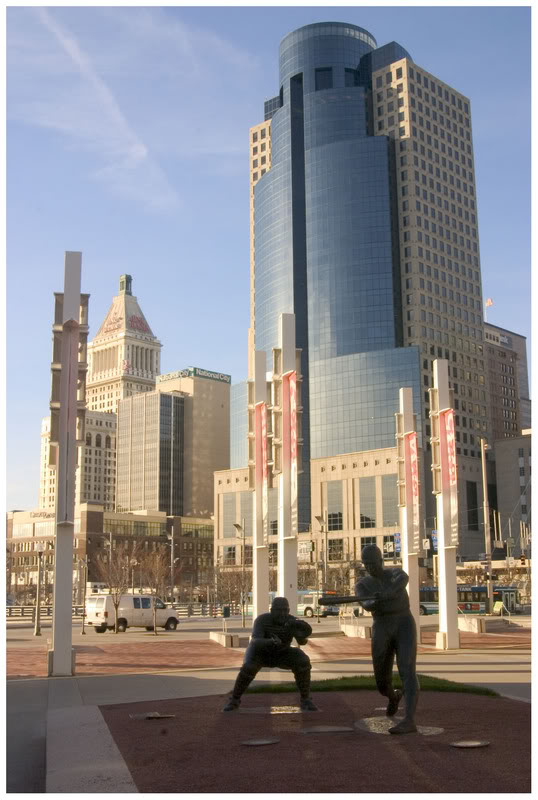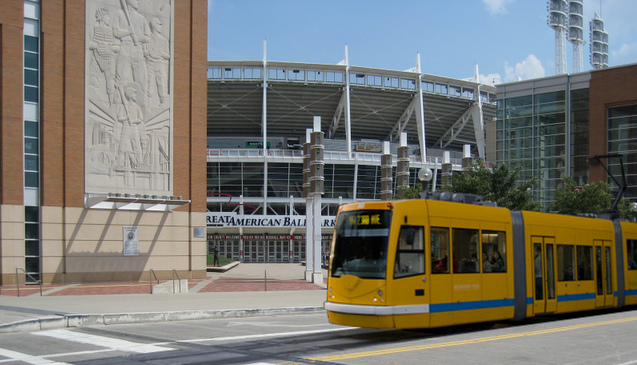Officials overseeing the development of The Banks have announced that they will soon proceed with the design and construction of the infrastructure needed for the next phase of the massive riverfront project.
Yesterday, at a special meeting of The Banks Steering Committee, the eight-member group unanimously voted in favor of moving forward with what they expect to be $29.3 million worth of work, which would then provide the platform for millions more in private investment in the form of offices, residences and retail on what is referred to as Lot 24.
As has been the case with all prior phases of the mixed-use development, the City of Cincinnati and Hamilton County will build out the utilities and roadway network, and construct a 690-space, two-level parking garage that will lift the site out of the Ohio River floodplain. Carter and The Dawson Company – the private development team selected for the project – would consider what elements should be included and then proceed with building and leasing out whatever is built on top of the parking decks.
A guiding principle that has not changed since the beginning of the development process is that the underground parking garage will be reserved for public parking, leaving Carter-Dawson to develop additional above-ground parking to satisfy the City’s mandatory parking requirements.
The Steering Committee said that the public work will be funded through the issuance of $22 million in tax increment finance bonds, and $7 million from the State of Ohio. Project officials say issuance of the bonds is expected to come within the coming months.
While the Carter-Dawson team has not yet decided the exact mix for this third phase of work, it is widely expected to be primarily residential. In total, the zoning and infrastructure for the site will allow for around 320,000 to 400,000 square feet of developable space.
The timing of the announcement could not be better, with work rapidly progressing on General Electric’s 338,000-square-foot Global Operations Center, 19,000 square feet of retail space, and the 291 apartments at the phase two site to the immediate north; and with the announcement that AC Hotels will develop the long-sought hotel along Main Street in front of Great American Ball Park.
Phase two work is expected to be completed in phases throughout 2016, while AC Hotel by Marriott is expected to open in spring 2017.
While management with the Cincinnati Bengals expressed some concern over the loss of one of the team’s few remaining tailgating lots, The Banks itself is evolving into more of an entertainment district than many had thought.
In April, state officials approved a new open-container district law that will soon be in place at The Banks; and yesterday, in a separate move, the Cincinnati Reds applied for a zoning variance to allow for the installation of a video board that will overlook Freedom Way – providing live video programming when the surrounding streets are shut down to cars for special events. Such moves could render tailgating lots obsolete as fans move to the streets on game days.
Project officials say the phasing of construction at the 18-acre site has been carefully coordinated between the district’s various stakeholders, along with the construction schedule of Smale Riverfront Park. As park work has moved west so has work at The Banks, and with the latest work on the park taking place just south of phase three of The Banks, the timing makes perfect sense.
If all goes according to plan, this next phase of infrastructure work could begin as soon as January or February – just after the conclusion of the Bengals football season.
